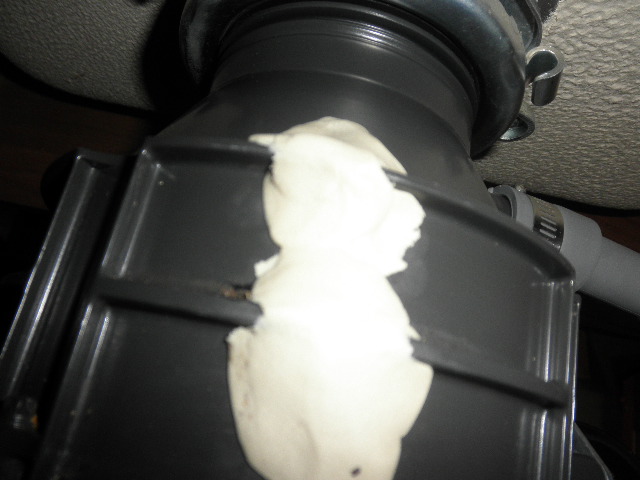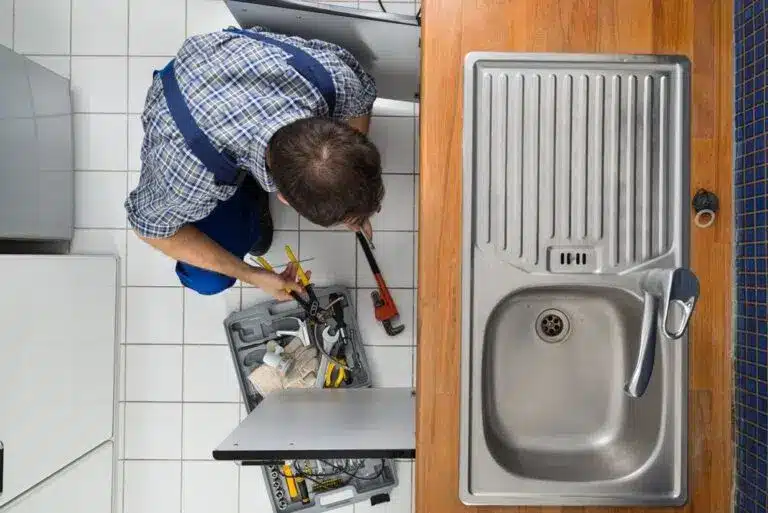Our Guide to Resolving a Leak in Your Garbage Disposal
Our Guide to Resolving a Leak in Your Garbage Disposal
Blog Article
Right here down the page you will find a good deal of very good expertise involving Why Is My Garbage Disposal Leaking From the Bottom?.

Garbage disposals are necessary cooking area appliances that aid in throwing away food waste efficiently. Nevertheless, a leaking waste disposal unit can be a frustrating and unpleasant trouble to deal with. Thankfully, many leakages can be repaired easily with a couple of easy steps. In this short article, we will certainly talk about exactly how to deal with a dripping waste disposal unit properly.
Introduction
Waste disposal unit are mounted under kitchen area sinks and are developed to shred food waste into smaller sized pieces, allowing it to pass through the plumbing system conveniently. While these gadgets are typically dependable, leakages can occur gradually because of wear and tear, loose links, or damages to the system.
Usual Reasons For Leaks in Garbage Disposals
Worn Seals and Gaskets
Seals and gaskets play an essential role in stopping water from dripping out of the garbage disposal. With time, these parts can wear away, causing leakages around the disposal system.
Loose Links
The connections in between the waste disposal unit and the pipes system can become loosened in time, triggering water to leakage out during operation.
Cracks or Holes in the Disposal System
Physical damages to the garbage disposal, such as splits or openings in the housing, can also lead to leakages.
Identifying the Resource of the Leakage
Before trying to repair a leaking waste disposal unit, it is necessary to determine the source of the leakage. This can commonly be done through aesthetic evaluation or by conducting straightforward examinations.
Visual Evaluation
Inspect the waste disposal unit system carefully for any type of indications of water leak. Pay very close attention to areas around seals, gaskets, and link points.
Checking for Leakages
One method to examine for leaks is by running water with the disposal device and checking for any kind of noticeable signs of leak.
Tools and Products Needed for Fixing a Leaking Waste Disposal Unit
Prior to beginning the repair work procedure, collect the essential devices and products, including a screwdriver, flexible wrench, plumbing technician's putty, substitute seals or gaskets, and epoxy or patching material for repairing splits or holes.
Step-by-Step Guide to Dealing With a Dripping Garbage Disposal
Shut off the Power
Prior to attempting any fixings, make sure that the power to the garbage disposal unit is turned off to avoid the risk of electric shock.
Locate the Leak
Identify the specific area of the leakage and establish the cause.
Tighten Connections
Make use of a wrench to tighten up any kind of loose connections in between the disposal unit and the pipes system.
Change Seals or Gaskets
If the leakage results from worn seals or gaskets, eliminate the old components and replace them with new ones.
Patching Splits or Openings
For fractures or holes in the disposal system, usage epoxy or an ideal patching product to seal the damaged location.
Evaluating the Garbage Disposal After Fixing
When the repair service is total, evaluate the waste disposal unit by running water with it to guarantee that the leakage has actually been fixed.
Preventive Upkeep Tips to Avoid Future Leaks
To prevent future leaks, it is essential to carry out regular upkeep on your waste disposal unit. This includes keeping it clean, avoiding placing non-food things or tough objects down the disposal, and periodically looking for leakages or other issues.
Verdict
In conclusion, taking care of a dripping garbage disposal is a fairly uncomplicated process that can be finished with basic tools and products. By complying with the steps outlined in this write-up and practicing preventative upkeep, you can maintain your garbage disposal in good working condition and prevent expensive fixings in the future.
What to Do About a Leaking Garbage Disposal
A leaking garbage disposal often goes unnoticed until you confront a sopping cabinet, a foul-smelling puddle, or an audible drip-drip-drip from the unit. The fix can be frustrating, too, because the leak can stem from a number of components in the system. Fortunately, with a little sleuthing, you can zero in on the leak and—depending on the exact location—stop the icky oozing and repair the component that caused it. Worst case scenario, if it turns out that the garbage disposal must be replaced, installing a new one is a reasonable do-it-yourself task for those with basic plumbing skills. Read on to keep the cash you’d otherwise hand over to a pro.
Prepare to find the leak
Prior to testing the garbage disposal for leaks, unplug it at the wall outlet and turn off the power from the breaker box to prevent electrical shock. Then insert a watertight sink stopper into your sink drain and wipe the unit dry with a clean cloth. In any handy container, mix a few drops of food coloring into a few cups of water, and pour the dyed water onto the sink stopper to help you locate the leak.
Investigate the source
the top, where the disposal meets the sink drain the side, where the dishwasher hose or main drain pipe connects to the disposal or the bottom of the unit Inspect each of these locations while gliding a light-colored rag over the unit; the dyed water will readily show on the rag and reveal the location of the leak. If a leak isn’t immediately apparent, remove the sink stopper and pour a few more cups of dyed water down the sink drain, then check for leaks again. Leaks near the top of the unit are more likely to show themselves while the sink is plugged, while side and bottom leaks are more noticeable while the sink is unplugged.
The metal sink flange that sits directly inside the sink drain is typically sealed around the top with plumber’s putty (a clay-like sealant) and then secured from under the sink with bolts. If the plumber’s putty deteriorates, or the bolts loosen, the flange can no longer form a watertight seal between the sink drain and the disposal—which could cause a leak at the top of the unit.
To reseal the leaky flange, you must first detach the garbage disposal. Start by loosening the screws securing the main drain pipe to the disposal, then loosen the screws in the metal clamp securing the dishwasher hose to the disposal and detach the drain pipe and dishwasher hose from the disposal. Loosen the screws in the mounting ring that connects the disposal to the metal mounting assembly beneath the sink, then pull down the disposal and carefully set it on a clean, dry surface. Loosen the bolts in the mounting assembly with a wrench, then pull down the mounting assembly and set it near the disposal.

As a passionate person who reads on Why Is My Garbage Disposal Leaking From the Bottom?, I thought sharing that segment was a great idea. Appreciated our article? Please share it. Help someone else check it out. Thanks for your time. Visit again soon.
Get A Free Estimate Report this page